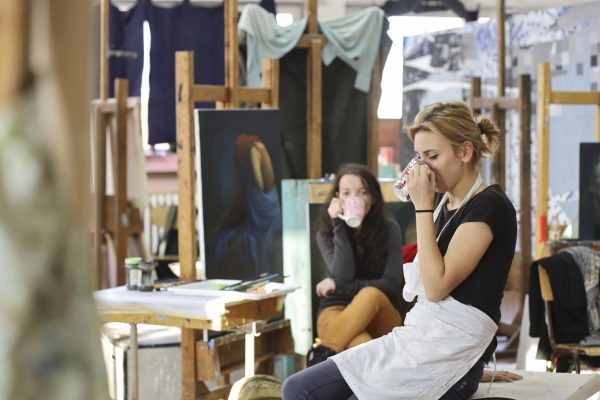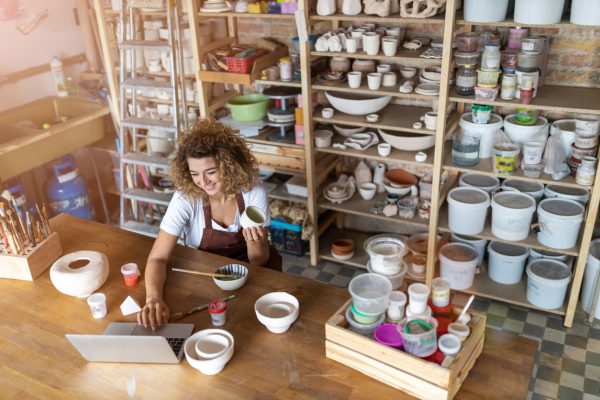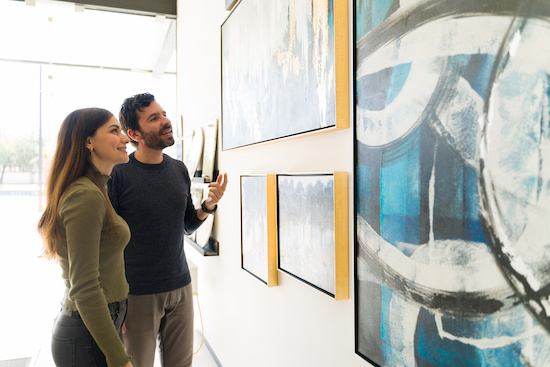Moving from a home studio into a professional space is a dream for many artists. If you are outgrowing the spare room or the garden shed, getting a professional studio is the next step. But before you sign the...
Moving from a home studio into a professional space is a dream for many artists. If you are outgrowing the spare room or the garden shed, getting a professional studio is the next step.
But before you sign the lease on a space, there are plenty of things to consider. Here’s Artweb’s guide to setting up your professional art studio.
How much will it cost
One of the first things any artist will consider is whether they can afford a studio. For any business, the cost of the building — rent, utilities and internet connection at a minimum — will need to be factored in to your profits.
Approach your decision as you would any business. You will need to work out what you can afford (against the money you make) and the value of having a dedicated space. The space doesn’t have to be purpose-built for artists, but it is usually much, much easier if it is. Sculptors and potters need expensive pieces of equipment and access to outside spaces. Even painters will need to check if they can use oil paint and flammable ingredients like turpentine. If you are setting up in a business unit, consider how the other businesses will feel about the wafting fumes of wet paint down the corridors.
Prices for spaces are usually worked out per square foot, so it is easy to compare costs.
What you need to consider
Basic facilities should include features like internet connection and utilities. Next, you should inquire about the hours of access (some may offer 24-hour access), security and whether you can park. You will also need to look at sink availability, access to outdoor spaces and the health and safety implications and insurance needs of the medium you use.
Lighting
You will also need to consider lighting. Painters should avoid windowless rooms with strip lighting that have no natural light. Professional art studios have usually considered this and will have good lighting whatever the size of your studio space.
Geography
The studio needs to be easily accessible — so don’t pick a space too far away. It is all too easy for an artist to find themselves still working from home because the spare room is closer. This is one reason why a short lease is a good idea.

Should you join an existing studio
Existing professional studios are buildings that have been created or outfitted specifically for artists. There may be the option to rent individual studios inside a single building, which will have all the facilities you need, whether it is good natural light for painting or sinks and specialist equipment.
The main benefits of joining an existing studio is that many of the considerations have already been worked out, and may all be included in a single fee. All you need to do is write the check and get unpacking. But there might be a higher price to be paid for all the convenience.
You can start with a smaller or shared space (or even rent a wall) and move into larger spaces as your success requires.
Choosing the right studio space
Easy access to other artists is one of the major factors for choosing to work in an existing professional studio. Working as an artist can be quite lonely, so being able to pop into other studios and meet up in the communal kitchen or through events is a major bonus. One of the less obvious things to consider when joining or setting up a professional studio is the other artists.
Studio by medium
Ceramicists, glass artists, potters and sculptors will often share studio space for practical reasons. The equipment they need and the cost of running that equipment can be shared.

Setting up your own professional art studio
If you have found a great space and want to set up an artist colony, there are plenty of things to work out before you pick up a paintbrush or start spinning your potter’s wheel.
Do you have the skills
Experience is vital. You should have worked in a shared space already — and even managed it, so you understand all the responsibilities. Many larger professional studios will have a studio manager who is paid a salary by the artists to take care of the bills so they can concentrate on creating art.
Some of the responsibilities include collecting and paying rent and utilities, ensuring building codes and health and safety are up to date, insurance, marketing, dealing with problem tenants or those who have not paid their bills (which might mean unpleasant evictions). It’s easy to see why so many professional studios opt to pay for a manager.
Is there funding?
There are millions of dollars floating around at local, state and national level. There will be specific pockets of money for specific mediums, subjects, geographical areas and the artists themselves. Some of this money can go unspent because applicable artists fail to apply.
Start with the National Endowment for the Arts, which awarded almost $230 million in 2023. Look at the variety of funding options they have and how the process works. Some of the grants are enormous, others are for specific artist groups, but much of the money is spent on projects that bring the arts to the community. Add a few workshops to your timetable and your professional art studio could find itself receiving financial support! Once you are familiar with the national processes, look at state and local options.
Can you get sponsorship
Studios are expensive to run. But there may be commercial answers. Local businesses may be willing to put a few dollars into the pot or offer equipment in return for some marketing. This might be on the studio’s website, marketing and at exhibitions. Many people love the arts and want to be involved in the art world.
 Set up a studio gallery. Image Grigory Bruev | Adobe Stock Images
Set up a studio gallery. Image Grigory Bruev | Adobe Stock Images
Set up a gallery
One of the benefits of a professional studio is that it can cut out the middleperson: the gallery. Galleries will take as much as 50% of artwork sales. Open studio events or studio visits by appointment can generate sales.
If you have a professional group studio consider making space for a permanent gallery space showcasing the work of all the artists. There are a few things to consider when doing this:
Make sure all the work is for sale. Have a range of price points. Start with small prints or stoneware for under $20 and increase gradually to those large paintings, ceramics or sculptures with equally sizable price tags. Offer regular open hours and ensure it is staffed during open hours (artists can cover in a rotation). Change the work on show regularly and incorporate special opening events. Work out how payment will be taken. Checks are the easiest as they can be written out to the artist. If you offer electronic payments, you will need to set up a studio bank account where the money can go before being disbursed to the artist.Starting from scratch? Why not consider setting up a home art studio












